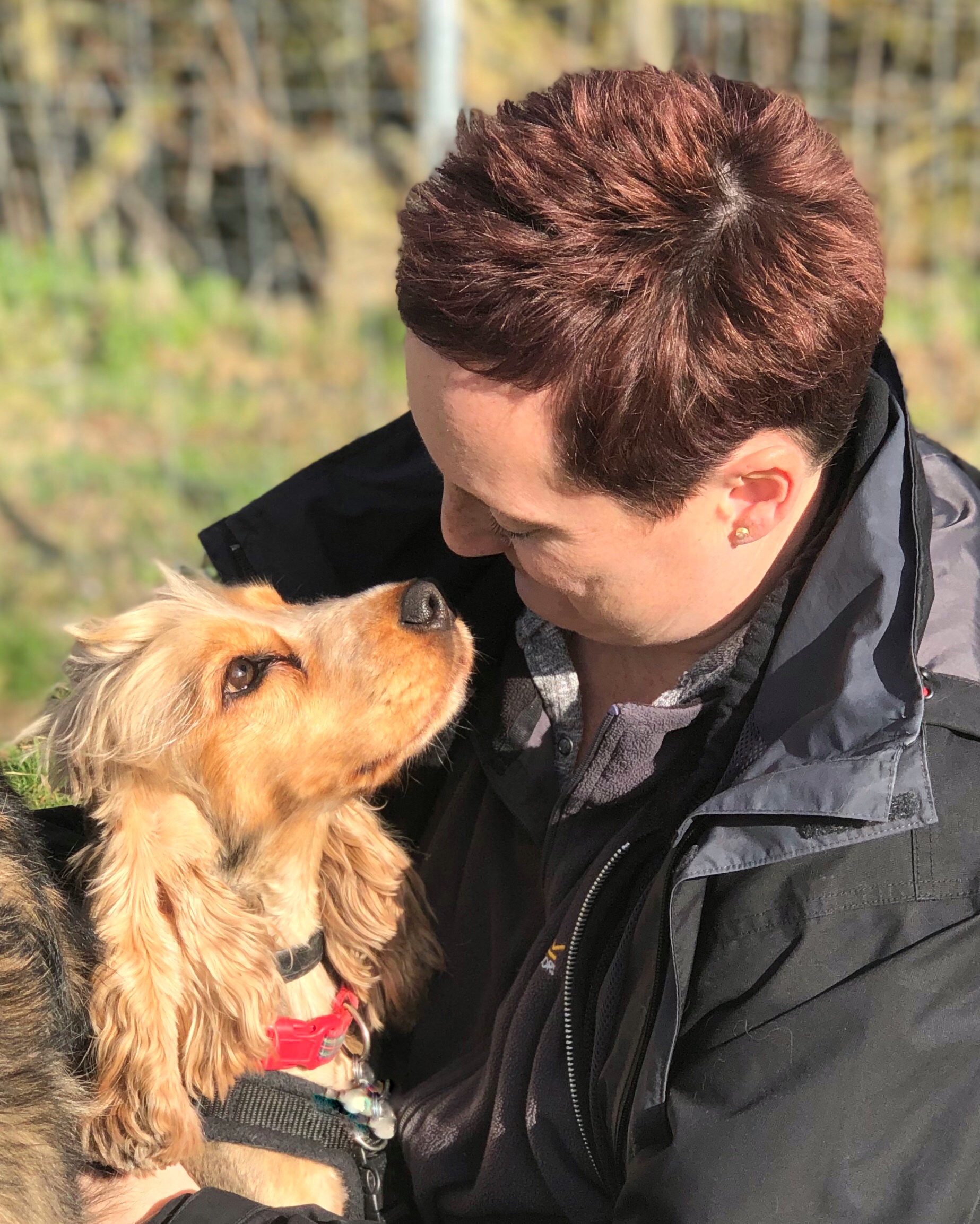
If you are lucky enough to holiday abroad, you’ll know how tricky it can be to communicate with someone who doesn’t speak your language. More often than not, you’ll resort to body language. Pointing, gesticulating or miming. It’s not easy to manage without the spoken word but luckily most fellow humans understand our body language and although it’s frustrating at times, we can get by. Imagine though that you couldn’t make yourself understood with either words OR body language. To a dog whose owner doesn’t understand canine communication, life must be challenging at times and would certainly cause frustration and less desirable behaviours to be seen from the dog as a consequence.
Learning to “speak” dog will make a huge difference to both of your lives. When you understand what your dog is communicating to you, you can help him or her to live a truly contented life. Your relationship with your pet will be stronger, happier, better.
When training your puppy or dog, you’ll find that communicating in ways your pet can understand will not only give faster results, it will give longer lasting results. We use different types of training ranging from your ‘obedience’ type tasks to tricks and husbandry handling skills to improve this two way understanding, respect and communication of each other.
Dogs are not deliberately naughty, no dog wants to resort to growling or biting, and they don’t seek revenge if you get something wrong. Picking up on body language to realise that aggression or other unwanted behaviours are actually symptomatic of anxiety, fear or just poor communication from us humans enables you to solve a problem at its very core. Use your canine communication skills to resolve problems and make them less likely to reoccur.
Inter-species communication. Or how dolphins taught us how to train dogs
Humans learn a lot from studying behaviour in other mammals. We learn how to improve our own communications, protect our ecosystems and live more sustainably. Modern dog training methods are firmly rooted in the research done by the animal behaviourists working around the world with non-domestic animals.
I mentioned in our recent husbandry skills and choice based training class, how a lot of the training was based around our learnings of marine mammals. After all you would not see a dolphin being pinned down to give it a tablet! Their handlers would train for it instead, just as we should for our pet dogs.
Many different species are being studied and worked with but one of the most interesting is the dolphin. Not least because just like domestic dogs, dolphins seem to enjoy interacting with humans.
Working with dolphins can be challenging. Just like dogs, they can be physically powerful and suffer terribly when they are stressed. To make sure they stay healthy we need to be able to handle and communicate with them easily and safely.
Force is neither practical nor productive so over time, behaviourists have developed effective training methods. These methods involve patience, trust and allowing the animals to learn through their own choices. It’s these methods that have transformed the way we think about and train our pets.
In a nutshell, to train a dolphin or a dog, we reward the behaviours we want to encourage in the trainee animal. Then they teach the animal to associate those actions with a cue (e.g. a spoken word, a whistle or movement). There’s no physical force, no bullying and no pain. Consequently the animals enjoy training.
Thinking, problem solving and making choices seems to benefit the animal’s mental health. It also seems that when an animal works something out for themself, they remember the lesson for a long time.
The same applies to our pet dogs. Force free training, mental stimulation and a strong relationship with their human companions makes for a more relaxed dog who is easy to handle in any situation. And surely that’s what all of us want for our canine companions.
I’ve personally trained dogs, cats, guinea pigs and birds using the same ethos, and guess what they all responded and have fun filled lives because of it.
How can a dog trainer help you to communicate with your dog?
Studying and achieving a high level of dog training qualifications takes years of dedication and work. We never stop learning and developing our skills, and spend our life finding ways to pass that knowledge on to dog owners.
At Best Behaviour we don’t just teach you dog training methods and exercises, we teach you the theory behind them too. You will learn why your dog behaves in a certain way, what your pup is trying to tell you and how you can help your dog live confidently as part of your family.
We enjoy getting to know you and your dog and tailor training to your dog’s level and personality. Our dog trainers teach you how to think like a dog and train your canine companion for life.
Related articles
Are you ready for a dog?
What’s the difference between dog training and canine behavioural advice?
Training your dog or puppy with Best Behaviour Dog Training
Copyright © 2025 Best Behaviour Dog Training
Registered No. 12954178
Registered address: Poplar Hill, Stowmarket, Suffolk, IP14 2AX
Website design by Upshot Media Ltd